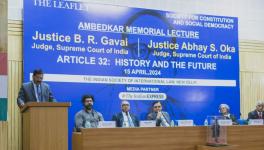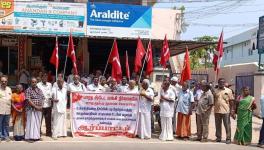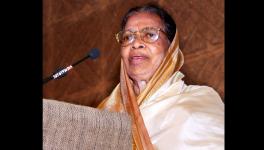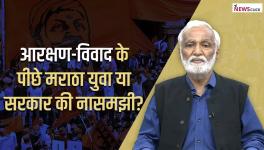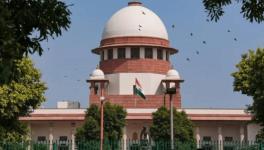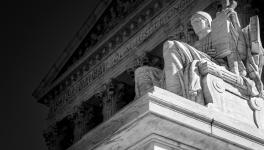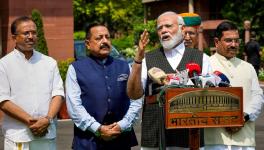Significance of Dissent in Supreme Court’s Judgment in the EWS Case
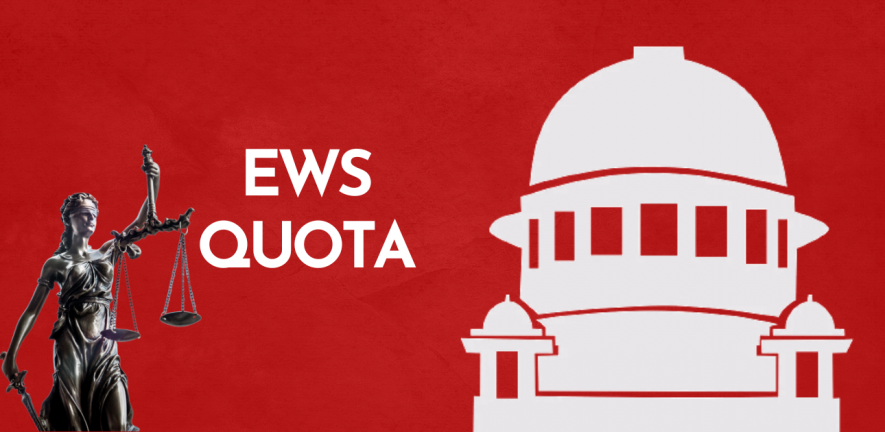
THE 11th Chief Justice of the U.S. Supreme Court, Charles Evans Hughes wrote in 1936 that dissenting is “an appeal to the brooding spirit of the law, to the intelligence of a future day, when a later decision may possibly correct the error into which the dissenting judge believes the court to have been betrayed”.
Former Associate Justice of the U.S. Supreme Court, Benjamin N. Cardozo, had noted in 1925: “The dissenter speaks to the future”.
“In the eye of the law, there is in this country no superior, dominant, ruling class of citizen. The humblest is the peer of the most powerful”, wrote former another Associate Justice of the U.S. Supreme Court, John Marshall Harlan in his great dissent in the U.S. Supreme Court’s judgment in Plessy versus Ferguson (1896).
It is important to note that the dissent of Harlan was against the “separate but equal” doctrine, which permitted segregation between African Americans and whites, including in schools. The majority in the Bench held that it does not affect the equal protection clause in the U.S. Constitution, since equal facilities were provided. The majority view in Plessy versus Ferguson was overruled by the U.S. Supreme Court only in 1954 in Brown versus Board of Education.
In the Indian Supreme Court’s recent Economically Weaker Section (‘EWS’) quota judgment, the minority dissented on the ‘exclusionary practice’ with which the majority found nothing wrong.
The minority view in the judgment, pronounced by a five-judge Constitution bench on Monday, has the potential to appeal not only to the intelligence of the future, but to the wisdom of contemporary discourse as well. It is comparable to the greatest dissents in Indian judicial history, be it that of Justice Fazl Ali in A.K. Gopalan versus State of Madras (1950) or of Justice H.R. Khanna in ADM Jabalpur versus Shivkant Shukla (1976).
Dissent notwithstanding, however, for the first time in judicial history, a bench of five judges of the Supreme Court has unanimously upheld ‘economic criteria’ as the sole basis for affirmative action.
Also read: AG defends EWS quota as distinct and not violative of basic structure theory
“The State’s compelling interest to fulfil the objectives set out in the Directive Principles, through special provisions on the basis of economic criteria, is legitimate [for the purposes of Article 15 of the Constitution]”, held Justice S. Ravindra Bhat, one of the dissenting judges on the bench.
On Article 16, for the purpose of reservations in appointment to public employment, Justice Bhat has a slightly different view. This is because the goal of Article 16 is empowerment, through representation of the community, according to him.
All the five judges held that economic criteria for the purposes of reservation does not, per se, violate the basic structure of the Constitution. This is a clear departure from the earlier view of the court.
All the five judges held that economic criteria for the purposes of reservation does not, per se, violate the basic structure of the Constitution. This is a clear departure from the earlier view of the court, but then the very basis of reservation in the Constitution was amended by virtue of addition of clauses in Articles 15 and 16 by the 103rd Constitutional Amendment, the validity of which was upheld by the EWS judgment.
All the five judges also agreed that special Constitutional provisions based on economic criteria, in relation to admission to ‘private unaided institutions’, do not violate the basic structure.
The judgment of the Supreme Court in Pramati Educational and Cultural Trust versus Union of India (2014) upholding the Constitution (93rd Amendment) Act, 2005 was a ready reckoner. In this case, another five-judge Constitution bench had held that the 93rd Constitutional amendment inserting clause (5) into Article 15 of the Constitution and the Constitution (Eighty-Sixth Amendment) Act, 2002 inserting Article 21A into the Constitution, do not alter the basic structure or framework of the Constitution and are constitutionally valid. The challenge to reservation within private unaided educational institutions (except minority institutions covered under Article 30) was rejected in that case.
Justice Bhat held in his minority judgment in the EWS case that unaided private institutions, including those imparting professional education, cannot be seen as standing out of the national mainstream.
Dynamics of dissent
Ceiling limit of 50% and the views of Dr. Ambedkar
Disagreement among the five judges was sharp on the question of whether reservation for economically weaker sections of citizens up to ten per cent, in addition to the existing reservations, results in violation of the Constitution’s basic structure on account of breaching the ceiling limit of 50 per cent, fixed by a nine-judge Constitution bench in Indra Sawhney versus Union of India (1992) .
The majority view expressed through Justice Dinesh Maheswari holds that it does not. According to him, that ceiling limit itself is not inflexible and in any case, applies only to the reservations envisaged by Articles 15(4), 15(5) and 16(4) of the Constitution. There is no separate reasoning recorded in the judgments of other two justices who concurred with him.
Justice Bhat, however, preferred to keep the question open, in his dissenting opinion. Noting that the breach of 50 per cent limit is the principal ground of attack in a pending case relating to the 76th Constitutional Amendment Act, 1994 which inserted Entry 257A – The Tamil Nadu Backward Classes, Scheduled Castes and Scheduled Tribes (Reservation of seats in educational institutions and of appointments or posts in the services under the State) Act, 1993 (Tamil Nadu Act 45 of 1994) – into the Ninth Schedule of the Constitution, Justice Bhat cautioned the majority that this judgment may well seal the fate of the pending litigation.
Article 31B of the Constitution states that none of the Acts and Regulations specified in the Ninth Schedule shall be deemed to be void on the ground of inconsistency with any provisions under Part III of the Constitution. The TN Act provides for 69 per cent reservation in educational institutions in Tamil Nadu.
The earlier view was that the insertion of any law into the Ninth Schedule makes the law immune from challenge in court. The Supreme Court, in I.R. Coelho versus State of T.N. (2007) held that all Constitutional amendments made on or after April 24, 1973 (that is, the date of the Supreme Court’s landmark Kesavananda Bharati judgment) by which the Ninth Schedule is amended, shall have to be tested on the touchstone of the basic structure doctrine.
The earlier view was that the insertion of any law into the Ninth Schedule makes the law immune from challenge in court. The Supreme Court, in I.R. Coelho versus State of T.N. (2007) held that all Constitutional amendments made on or after April 24, 1973 (that is, the date of the Supreme Court’s landmark Kesavananda Bharati judgment) by which the Ninth Schedule is amended, shall have to be tested on the touchstone of the basic structure doctrine. The TN Act is under challenge before the Supreme Court in Minor C.V. Gayathri & Ors. versus State of Tamil Nadu Health Dept. & Ors., and the reference in the opinion of Justice Bhat is to this case.
He had an additional reason to dissent on this issue – permitting the breach of the 50 per cent rule becomes a gateway for further infractions. Referring to the speech of Dr. B.R. Ambedkar in the Constituent Assembly on November 30, 1948, Justice Bhat observes that reservations are to be seen as temporary and exceptional or else they would “eat up the rule of equality”. It may be noted that then Chief Justice of India, U.U. Lalit with the opinion of Justice Bhat in its entirety.
Justice Bhat’s reference to the Constituent Assembly Debates on Article 10 of the draft Constitution (the present Article 16) on November 30, 1948 and to Dr. Ambedkar’s observations during the debate help us to correctly understand the majority judgment better, as well as why it should not be the basis for considering the validity of 76th Amendment to the Constitution.
Also read: EWS reservation is a fraud on the Constitution, counsel for petitioners tell the Supreme Court
Exclusion of classes covered under Articles 15(4), 15(5) and 16(4) from getting benefit of reservation as EWS
The major area of dissent between the judges in upholding/quashing the 103rd Constitutional Amendment was the exclusion of Scheduled Castes (‘SCs’), Scheduled Tribes (‘STs’) and Other Backward Classes (‘OBCs’) from the EWS quota.
The majority judgment is that of Justice Maheswari. Justice Bela M. Trivedi has recorded additional reasons for agreeing with Justice Maheswari. Justice J.B. Pardiwala has not only agreed with Justice Maheswari, but also disagreed with the minority view authored by Justice Bhat.
If economic advancement can be accepted to negate certain social disadvantages for the OBCs – which is what the ‘creamy layer’ concept is based on – the converse would be equally relevant. As larger percentages of backward class members attain acceptable standards of education and employment, they should be removed from the backward categories so that attention can be paid toward those classes which genuinely need help, observes Justice Pardiwala.
Justice Maheswari opined that for the purposes of Articles 15(4), 15(5) and 16(4) of the Constitution, when it comes to SCs, STs and OBCs, social and educational backwardness predominantly figures, but poverty too is thickly associated with these factors. He recognised that it is class poverty and not individual poverty, but then finds nothing wrong in not extending another benefit in the affirmative action of reservation carved out for other economically weaker sections. The quota earmarked for them (beneficiaries of earlier reservation) is not depleted in any manner and that exclusion is the vital requisite to provide benefit to the target group when there is a vertical reservation, according to Justice Maheswari. This being in the nature of balancing the requirements of non-discrimination and compensatory discrimination, does not violate Equality Code or basic structure, holds Justice Maheswari.
Justice Bhat, in his strongly worded dissent, starts by saying that this court has, for the first time in the seven decades of the Indian republic, sanctioned an avowedly exclusionary and discriminatory principle. The equality code (Articles 14–17 of the Constitution) promotes inclusiveness, enables reservations, and fosters social justice and equality. He notes that the exclusionary clause that keeps out from the benefits of economic reservation, backward classes and SC/STs, strikes a death knell to the equality and fraternal principle.
He held the two clauses in the 103rd Constitutional amendment to be violative of the basic structure. Chief Justice Lalit agreed with this.
Referring to the exclusion of the creamy layer from the OBC quota, Justice Pardiwala observes as follows: “If adequate representation in services of under-represented class was the sole purpose of Article 16(4), any person from that class would be representative of that class”. If economic advancement can be accepted to negate certain social disadvantages for the OBCs – which is what the ‘creamy layer’ concept is based on – the converse would be equally relevant. As larger percentages of backward class members attain acceptable standards of education and employment, they should be removed from the backward categories so that attention can be paid toward those classes which genuinely need help, observes Justice Pardiwala.
It is interesting to note that all the judges refer to fraternity but arrive at contrary conclusions as to the method to be adopted.
Also read: Petitioners continue their relentless attack on EWS quota before the Supreme Court
Conclusion
The majority view fails to address the arbitrary exclusion of SCs, STs and OBCs from the newly created class of EWS. Publicly available data shows the level of poverty among these classes. The majority also failed to notice the real reasons behind affirmative action – the inadequate representation in public services of SCs, STs and OBCs, and in addition to that, the social stigma and historical disadvantages in the case of SC/STs.
Any new policy of affirmative action ought to have been inclusive of the already marginalised sections. The existing reservation for a totally different cause, is no justification for their exclusion. The dissenting view on fraternal obligations, non-exclusionary principles, social justice and equality must be taken forward in our future discourse in and out of Parliament. Such values alone can act as a barrier against further erosion of Constitutional values.
Get the latest reports & analysis with people's perspective on Protests, movements & deep analytical videos, discussions of the current affairs in your Telegram app. Subscribe to NewsClick's Telegram channel & get Real-Time updates on stories, as they get published on our website.









